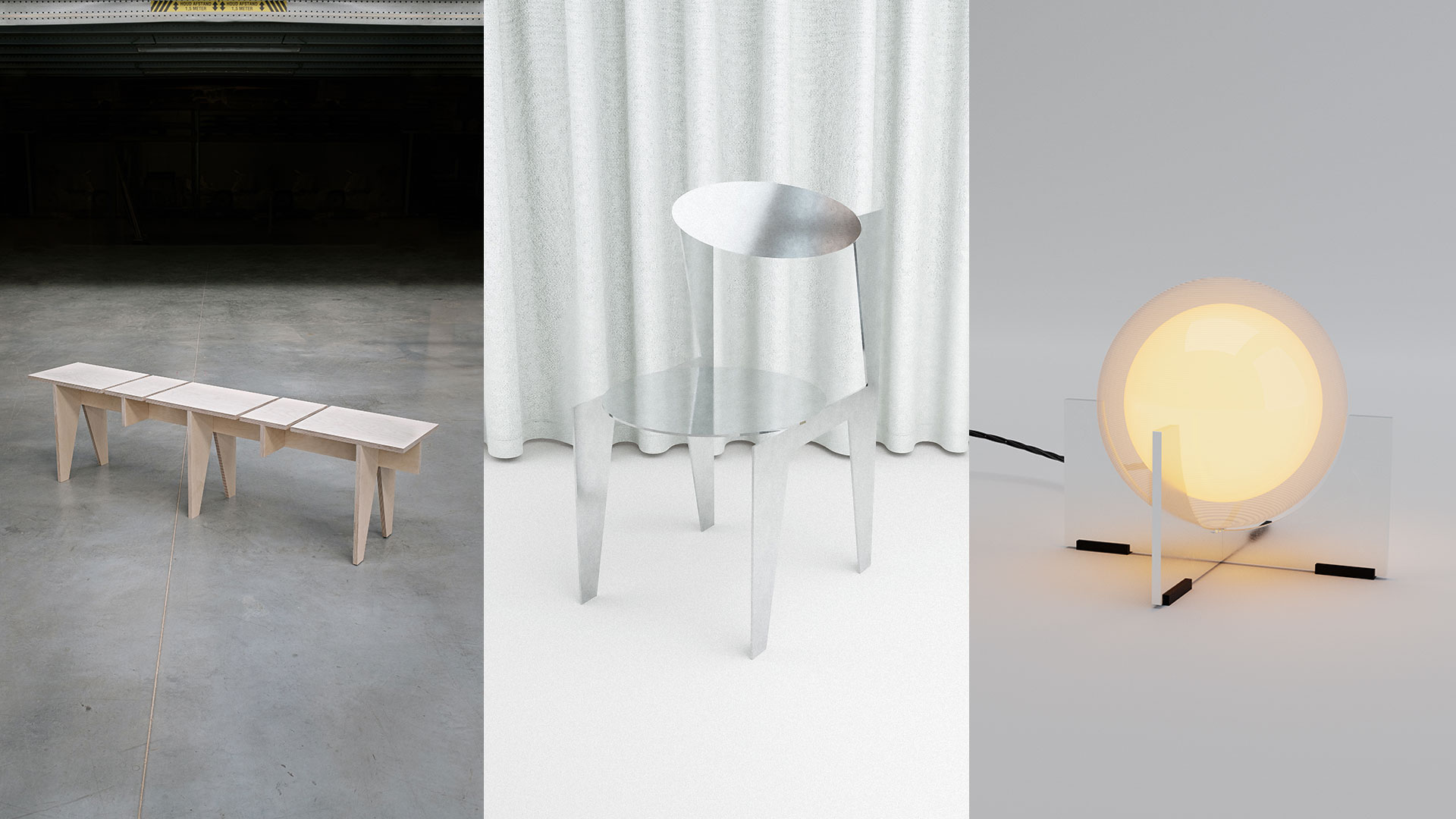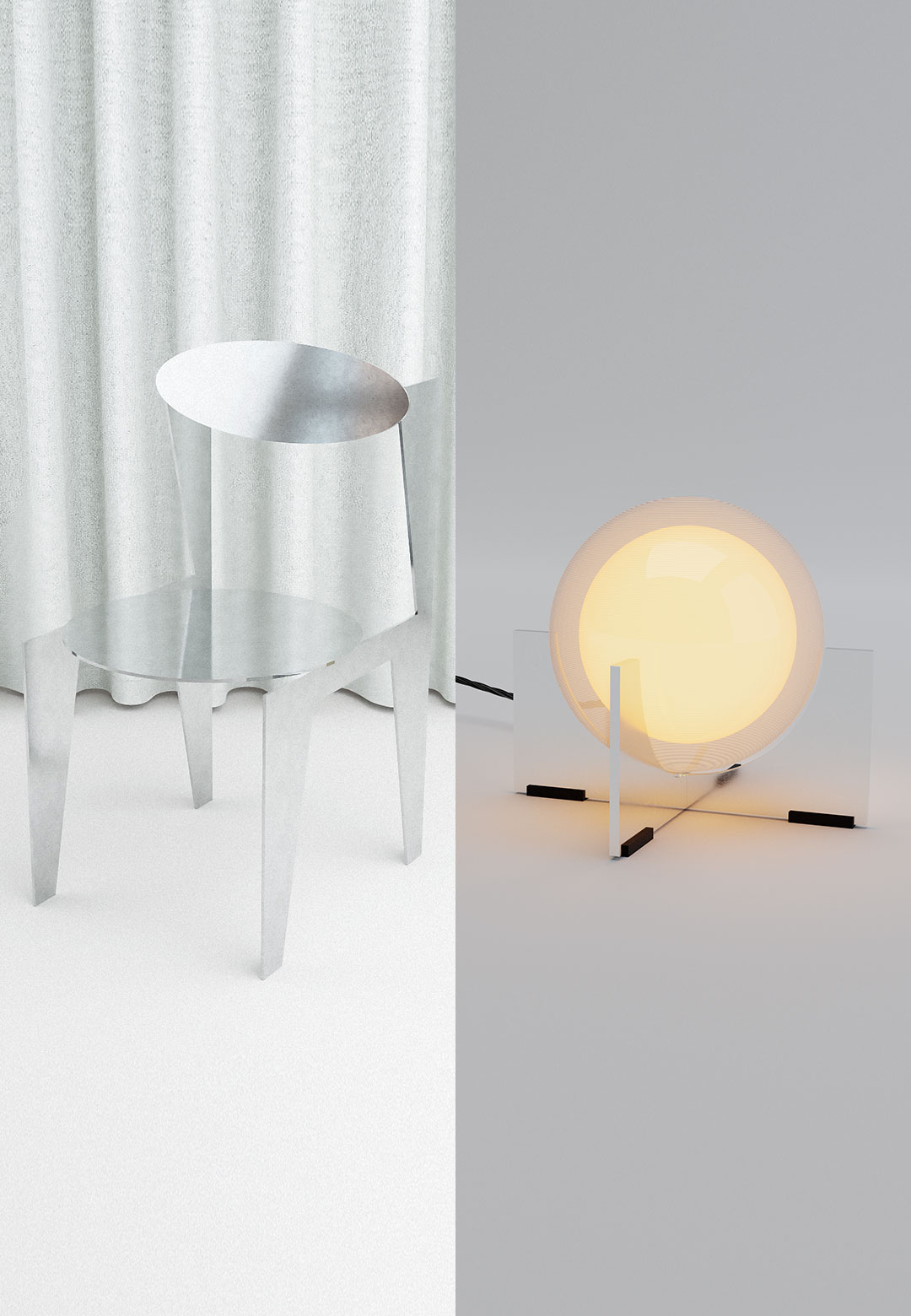Objects and spaces shaped with love carry an incomparable charm. They are inviting. They evince comfort and familiarity. Like friends, they promise to adapt in consonance with our habits and living styles, and fit in our spaces. Belgium-based product designer and interior designer Timon Mattelaer’s creations exhibit a similar allure. His furniture designs are characterised by geometric forms and soft features. Despite the usage of typical minimalist elements to compose objects and furniture, Mattelaer manages to suffuse his designs with attributes analogous to animate beings.
In keeping with the concerns of the present times, Mattelaer also ensures that the objects created by him do not harm the environment. He remains cognizant of the waste produced by him, while also ensuring that no harm is meted out to animals and other living beings. “My furniture is an ongoing study to discover the perfect furniture for the future, producing without polluting, without waste material, without animal harm, without deforestation,” the Belgian designer shares.
A few recent creations by the furniture designer include stools and benches, tables and chairs, daybeds, hooks, and 3D printed lamps. When asked what the inspiration behind each of his pieces is, Mattelaer explains, “My furniture always starts out with the same idea. Is there something I want to see differently designed on the market? Can I produce it better? Is there a need to produce it? And how can I design something as healthy as possible, without any waste.”
Mattelaer usually builds objects using sheets of plywood or aluminium scraps. In an attempt to keep the waste production low, the designer plans the production process ahead of time, choosing a process that leaves behind the least amount of spare material. When building furniture, he cuts out the individual parts of each table, stool, and chair from a single sheet of formaldehyde free pine plywood. This also helps discard the usage of glue, which can often prove toxic. Discussing the experience of building furniture, he shares, “Having so many limitations in my work can sometimes be a blessing, sometimes a curse. To this day I design and make all furniture myself in my workshop. I’m not a furniture maker by trade, so I’m in an ongoing study to improve myself, I also built things in a non-textbook way which can result in sometimes interesting discoveries.”
The stools and benches sculpted by Mattelaer are the first objects designed by him. While they were initially made for his private residence, Mattelaer later decided to expand on his designs and make them available to the public. His table design, on the other hand, emerged from Mattelaer’s decision to craft a modular piece that could be assembled easily and fit in a small space. Cut out from a single plywood sheet using a CNC machine, the table can seat four people and comes in two hues: natural and black. The plywood chairs built by him follow a similar production process. Mattelaer also built different iterations of the chair, using steel and aluminium plates, which were welded to create to final pieces.
The benefit of using each of these as the raw material is minimal waste production. The scraps left behind at the end of each production process can be recycled into new sheets and reused to build new objects. “I design everything with sustainability, low-waste or zero-waste, and locally sourced materials in mind,” Mattelaer asserts. Mattelaer’s daybed, too, is built out of reclaimed materials such as aluminium and steel. It can easily be assembled and disassembled.
Another experiment by the product designer includes a sidetable lamp made using aluminium scraps and a 3-D printed double walled sphere. “I sometimes dream about shapes or things I want. Here, I’m inspired by the light design glory days of the 60s. For me, the 60s in light design looked so futuristic,” the designer shares. Expanding on his furniture collection, Mattelaer also designed hooks, which may lead to an elaborate accessory collection in the future.
Mattelaer intends to expand his scope as a designer in the future. “I see myself more as a spatial designer, so I’m not limited to furniture. I love sketching on paper, translating that into a 3-D environment, and maybe never produce it. Just letting it exist in the non physical world can be quite a magical thing,” he says. One can now expect innovations by Mattelaer in the sphere of museums, exhibition design, interior spaces, and more.






 Sign in with email
Sign in with email










What do you think?